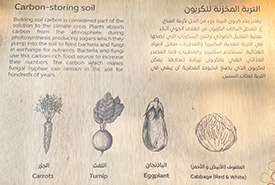The buzz about bees: The vital role of Prairie grasslands in bee conservation

Bumble bee on Wood’s rose, SK- Jason Bantle
Bees, like many other pollinators, are a sign of a healthy ecosystem. Unfortunately, these cute critters face numerous threats, including habitat loss, climate change, disease and poisoning. As a result, many bee species, such as western bumble...
Reflecting on a year of collaboration on National Indigenous Peoples Day

L-R: Kevin Teneycke, Gordon Beddome, Ken Norquay and Josh Dillabough at Wabano Aki (Photo by Fayaz Hasan / NCC Staff)
Today, June 21, is National Indigenous Peoples Day. At the Nature Conservancy of Canada (NCC), we celebrate and honour the unique diversity, cultures and contributions of Indigenous Peoples across the country. NCC works on the traditional...
Development needs can conflict with nature, but with knowledge we can grow together

Gaff Point, NS (Photo by Andrew Herygers/NCC staff)
Our lives depend on nature. From the water we drink, to the air we breathe and the experiences we enjoy outdoors, nature makes it possible. But what happens to these nature-based services as the world’s resource needs evolve and climate...
Show me the spreadsheet: Unveiling the wonders of working landscapes

NCC Stewardship Coordinator, Casey Rempel, engaging with Aberdeen Pasture patrons during a field event. (Photo by Matthew Braun/NCC staff)
What crazy jobs we have. Did you think when you were a young student that shuffling numbers on a spreadsheet for a school project would be the key bit of experience you’d need for conservation? Yeah, me neither. Let me explain by going on a...
Twelve Mile Creek: Niagara’s last remaining cold-water habitat

View of lower pond and adjacent embankment crest at Lathrop Nature Preserve, ON (Photo by Noel Boucher/ NCC)
In the urban landscape of Niagara, Ontario, lies a hidden gem: Twelve Mile Creek. This stream holds significant importance as the last remaining cold-water habitat in the region, serving as a critical lifeline for native species, including brook...
Spotting the spotted wintergreen: Research on rare woodland plants in Ontario

A tagged spotted wintergreen plant (Photo by Amy Wiedenfeld/NCC staff)
As summer approaches, I look forward to getting out into the field. This includes visiting many of the spotted wintergreen populations in Ontario for my PhD research, supported by the Weston Family Conservation Science Fellowship Program. Spotted...
Working landscapes, conservation and COP28: my takeaways

A wooden panel describing the importance of building soil carbon (Photo by NCC)
As the manager of agriculture policy for the Nature Conservancy of Canada (NCC), I went to COP28 to understand how agriculture and ranching contribute solutions to the climate crisis. Here’s what I learned: ⚡️ The ambition is...
Top 5 things I learned at COP28

Rob Wilson and other panelists at the Grasslands and Canadian Livestock: Solutions from the Ground Up event at COP28 (Photo by Melanie Bos/NCC)
As NCC’s director of conservation finance, I went to COP28 to learn how the world can fund climate change solutions, and to share about how we are building partnerships across the country to support nature and climate goals through...
Adventures in elk country: Exploring conservation, wildlife and nature

Elk at Lockerby, AB (Photo by NCC)
As the Nature Conservancy of Canada’s (NCC’s) conservation intern in the Red Deer River this past summer, I assisted in monitoring more than 35 properties in central Alberta. A critical aspect of monitoring involves making species...
Sanderlings flock to Mackie Ranch

Sanderlings (Photo by Jason bantle)
For the last blog of my internship with the Nature Conservancy of Canada (NCC), I chose to write about adorable birds that spend a lot of time in the sand: sanderlings. In fact, a flock of sanderlings is called a grain, which is a perfect name for...

